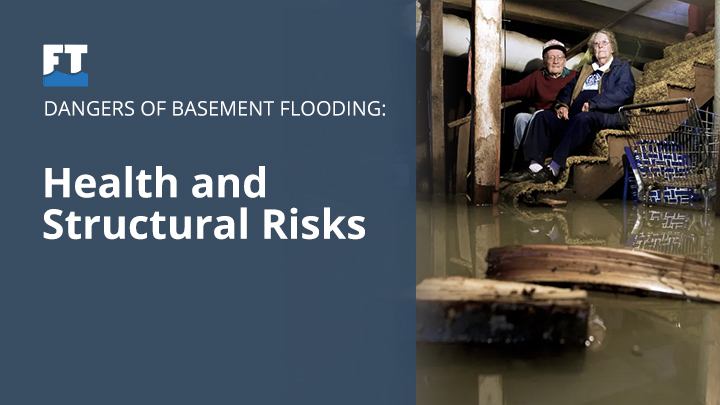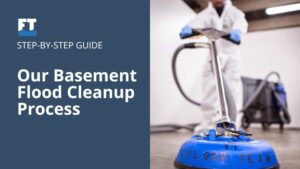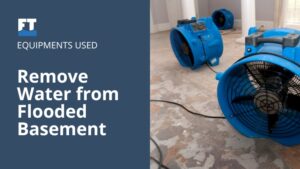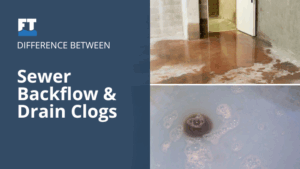Basement flooding is more than just a messy inconvenience—it’s a serious threat to health and property. Whether you’re a homeowner, business owner, property manager, or living in a flood-prone area, dealing with water damage quickly is essential. Floodwater isn’t just water; it carries bacteria, mold, and contaminants that can spread illnesses. If left untreated, it also weakens structures, leading to expensive repairs.
For businesses and property management companies, basement flooding can disrupt operations, damage inventory, and create liability issues. Ignoring the problem increases repair costs and can make buildings unsafe.
Let’s go over the real dangers of basement flooding and how to reduce risks.
Health Risks of Basement Flooding
Flooded basements create the perfect environment for mold, bacteria, and airborne toxins. Without proper cleanup, the air quality inside the building can decline, leading to respiratory issues and long-term health concerns.
Mold and Mildew Growth
Mold can start growing within 24 to 48 hours after a flood. Once it takes hold, it spreads quickly, especially in dark and humid conditions. Breathing in mold spores can trigger allergic reactions, worsen asthma, and lead to respiratory infections. People with existing health conditions are at even greater risk.
One of the key signs of mold growth is a persistent musty smell after a flood. Even if water is removed, damp carpets, drywall, and insulation can still harbor mold growth. The best way to prevent this is by drying the area completely and using dehumidifiers to remove excess moisture.
Bacteria and Contaminated Water
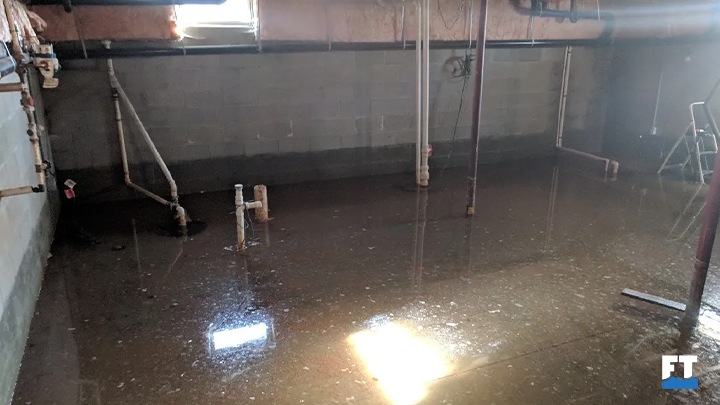
Floodwater isn’t always clean. In many cases, it carries bacteria and chemicals that can make people sick. A common issue during flooding is sewage backup, which poses a serious health hazard and requires professional cleanup. If the floodwater has a foul smell or an unusual color, it may indicate contamination.
Exposure to contaminated water can lead to skin infections, stomach illnesses, and other health problems. Touching or breathing in bacteria from floodwater can cause infections and complications, especially for children, older adults, and those with weakened immune systems.
Electrical and Fire Hazards
Water can quickly reach outlets, electrical panels, and appliances, creating a risk of electrocution. If there’s standing water in a basement, the power should be turned off immediately before anyone enters. Even after the water is gone, damp wiring can lead to short circuits and potential fires.
For businesses or rental properties, electrical damage from flooding can mean shutting down operations or moving tenants out while repairs are completed. Inspecting wiring and replacing any damaged electrical components is critical to restoring safety.
Structural Risks of Basement Flooding
Beyond health concerns, flooding can weaken the foundation, flooring, and walls of a building. If water damage isn’t addressed properly, it can lead to expensive repairs and long-term structural instability.
Foundation and Wall Damage
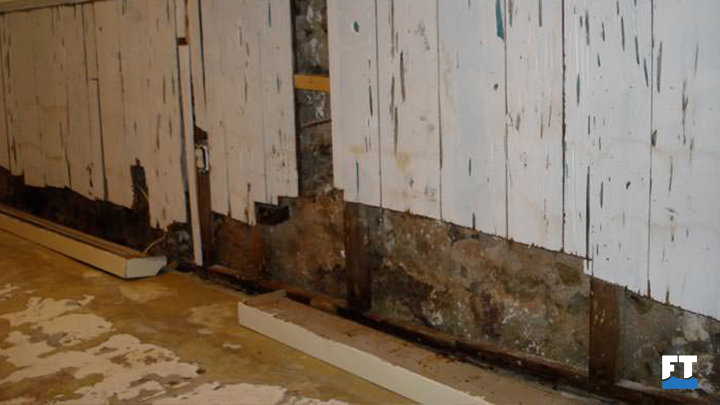
When water seeps into a foundation, it doesn’t just disappear. Over time, it can cause cracks, shifting, and weakening of the structure. If left unchecked, foundation damage can lead to uneven floors, misaligned doors, and serious structural problems.
Heavy rainfall, poor drainage, and backed-up pipes can all contribute to foundation damage. Scheduling regular drain cleaning can help prevent water buildup and reduce the risk of structural issues. If cracks appear in basement walls after a flood, it’s a sign that moisture has been trapped inside and needs to be dealt with quickly.
Damage to Flooring and Insulation
Water-damaged flooring is often beyond repair. Carpets absorb floodwater and become a breeding ground for mold. Wood floors warp and rot when exposed to moisture for extended periods. Even tile and laminate flooring can be ruined if water seeps underneath.
Insulation inside basement walls also suffers from flooding. Once it gets soaked, it loses its ability to regulate temperature, leading to higher energy costs and continued moisture buildup. If insulation has been exposed to floodwater, it likely needs to be replaced.
Structural Shifts and Weakening Support Beams
Prolonged exposure to floodwater can cause major structural shifts. When the soil around a foundation becomes saturated, it can lead to sinking or shifting, which affects the entire building. Support beams may also become weak if exposed to excess moisture, leading to sagging ceilings and floors.
If doors no longer close properly, walls appear to bow, or cracks become more noticeable, the structure may have shifted due to water damage. Addressing these issues early can help prevent costly foundation repairs later.
Safeguard Your Health and Property After Basement Flooding
Don’t let basement flooding ruin your property or compromise your health. Contact The Flood Team today for fast, professional basement flood cleanup services. Our experts are ready to help you prevent lasting damage and ensure a safe, dry environment.

Final Thoughts
Basement flooding isn’t just a temporary problem—it can lead to lasting health risks and structural damage. Water creates the perfect conditions for mold, weakens building materials, and introduces dangerous bacteria into the space. Whether dealing with a residential home, a commercial space, or a rental property, taking fast action is the best way to minimize damage.
Preventing flooding through drainage improvements, sump pumps, and waterproofing can save thousands in repair costs. If flooding does occur, hiring flooded basement cleanup companies is essential. They provide professional cleanup services to ensure that the building remains safe and habitable.
FAQs
What should be done immediately after a basement floods?
Shut off the electricity, remove standing water, and use fans and dehumidifiers to dry the area as quickly as possible.
Can mold be prevented after a flood?
Mold can be stopped by drying the area within 24 to 48 hours, using proper ventilation, and removing water-damaged materials.
Does insurance cover basement flooding?
Some policies cover water damage, but flood insurance may be required in high-risk areas. It’s best to check with the insurance provider.
What are the signs of foundation damage after a flood?
Cracks in walls, misaligned doors, and uneven floors could indicate structural damage caused by excess moisture.
What’s the most effective way to prevent future basement floods?
Keeping drainage systems clear, installing a sump pump, and sealing foundation cracks can help reduce the risk of flooding.

